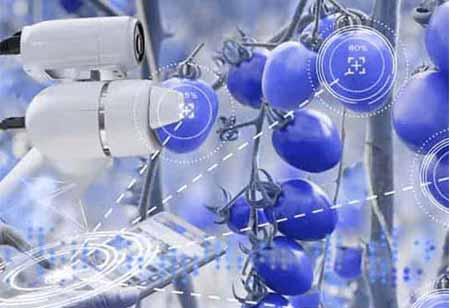Thank you for Subscribing to Agri Business Review Weekly Brief
Significance of IoT and AI in Transforming Aquaculture
The IoT and AI have benefited wild fishing, aquaculture in the sea, and land-based fish farming worldwide.

By
Agri Business Review | Friday, September 02, 2022
Stay ahead of the industry with exclusive feature stories on the top companies, expert insights and the latest news delivered straight to your inbox. Subscribe today.
Wild fishing, sea, and land-based fish farms benefit from IoT and AI to secure global food security and ensure economically and environmentally sustainable practices.
FREMONT, CA: The IoT and AI have benefited wild fishing, aquaculture in the sea, and land-based fish farming worldwide. These technologies contribute to the protection of global food security by ensuring that practices are cost-effective and environmentally friendly. Integrating IoT technology and artificial intelligence is helping the fisheries and aquaculture industries become more sustainable and efficient on an operational level. Businesses are adopting technology and internalizing advanced analytics will emerge, one that can contribute to the stability of global food supplies.
Overfishing
The sustainability of wild fish and seafood sources is crucial, and authorities now have access to data from satellite photography, drones, and underwater IoT devices. This information can be gathered and utilized to monitor catches and vessel whereabouts and to enforce sustainable fishing practices. Large fishing enterprises may use the same data to improve supply chain transparency and traceability. They are ultimately aiding the final consumer in making more conscientious purchasing judgments.
Precision fishing
The IoT and artificial intelligence (AI) are assisting fisheries in optimizing where and when they fish with sensors that identify the fish and catch size and onboard cameras that aid in sorting the catch. The data can also enhance the operating costs of the wild fishing business by providing insights to cut fuel consumption and optimize fleet maintenance using AI predictive maintenance.
Wellness & Welfare
It is crucial to ensure the health and well-being of fish farms, as a decline in water quality or a disease epidemic (such as fish lice) can be disastrous. Early detection enables producers to intervene before an outbreak and enhances fish welfare. IoT sensors can offer data on fish behavior, water conditions, and physiology to intelligent fish farms, which can then build AI models for the early diagnosis of insufficient circumstances.
Feeding improvement
With feed comprising a substantial amount of operating expenses and under- and overfeeding having detrimental effects on fish health, size, and water quality, optimizing feeding can result in significant savings and advantages. Many intelligent fish farms, such as e-fishery, employ feeders that rely on vibration and audio signals for more precise feeding. Using technology in aquaculture management also boosts efficiencies, lowering the need for labor, which is a significant financial and safety advantage for remote marine farms.
Harvest efficiency
Using data to simulate the reproduction, growth, and maturity of a species in conjunction with live data helps optimize rearing and assist farmers in determining the optimal harvesting time. Based on the fish, the projected death rate, and the current market price, complex models can be developed to aid in planning harvests to maximize profits.





